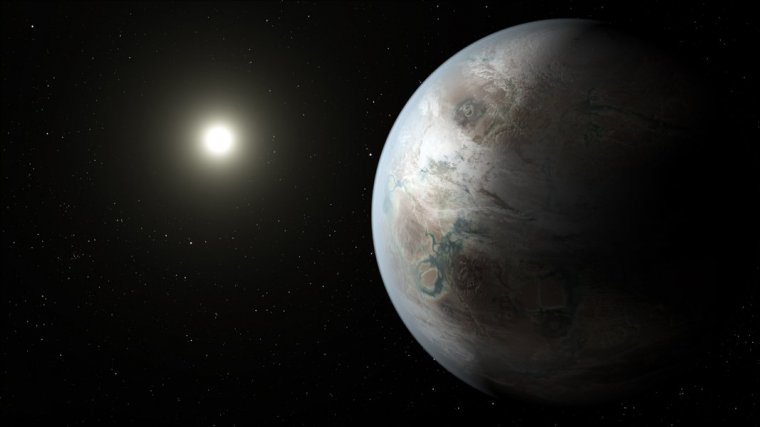| News / Space News |
Kepler Mission Discovers Bigger, Older Cousin to Earth
NASA | JULY 26, 2015
NASA's Kepler mission has confirmed the first near-Earth-size planet in the "habitable zone" around a sun-like star.

This artist's concept depicts one possible appearance of the planet Kepler-452b, the first near-Earth-size world to be found in the habitable zone of star that is similar to our sun. ![]()
The newly discovered Kepler-452b is the smallest planet to date discovered orbiting in the habitable zone -- the area around a star where liquid water could pool on the surface of an orbiting planet -- of a G2-type star, like our sun. The confirmation of Kepler-452b brings the total number of confirmed planets to 1,030.
Kepler-452b has a diameter 60 percent larger than Earth and is considered a super-Earth-size planet. While its mass and composition are not yet determined, previous research suggests that planets the size of Kepler-452b have a good chance of being rocky.
While Kepler-452b is larger than Earth, its 385-day orbit is only 5 percent longer. The planet is 5 percent farther from its parent star, Kepler-452, than Earth is from the sun. Kepler-452 is 6 billion years old, 1.5 billion years older than our sun, has the same temperature, and is 20 percent brighter, with a diameter 10 percent larger.
The Kepler-452 system is located 1,400 light-years away in the constellation Cygnus.
YOU MAY ALSO LIKE

